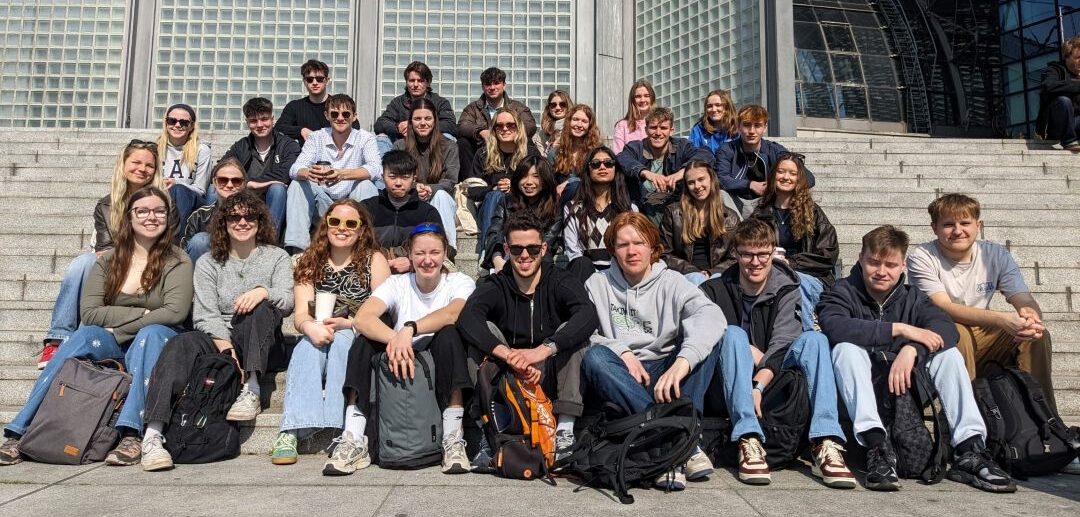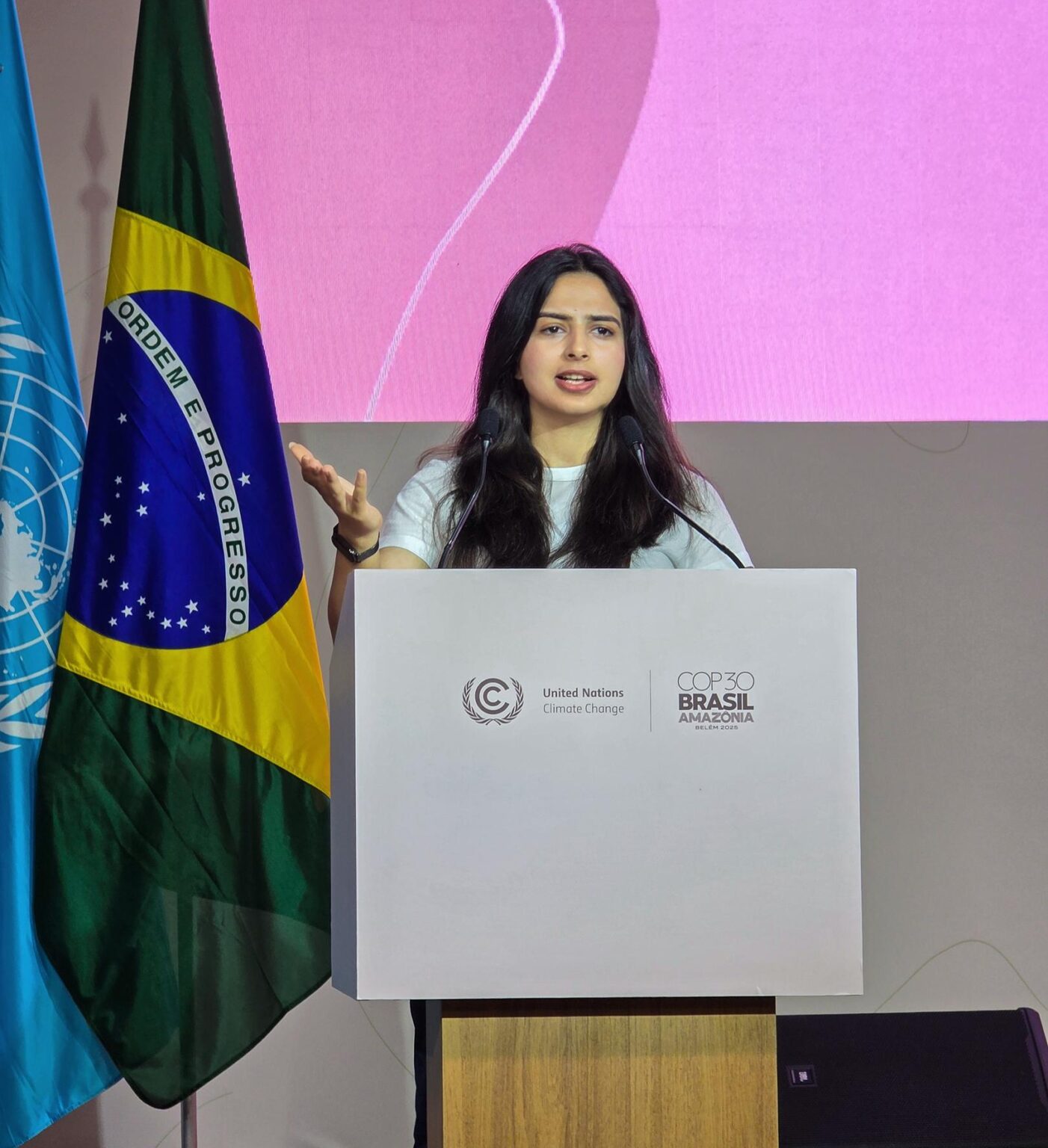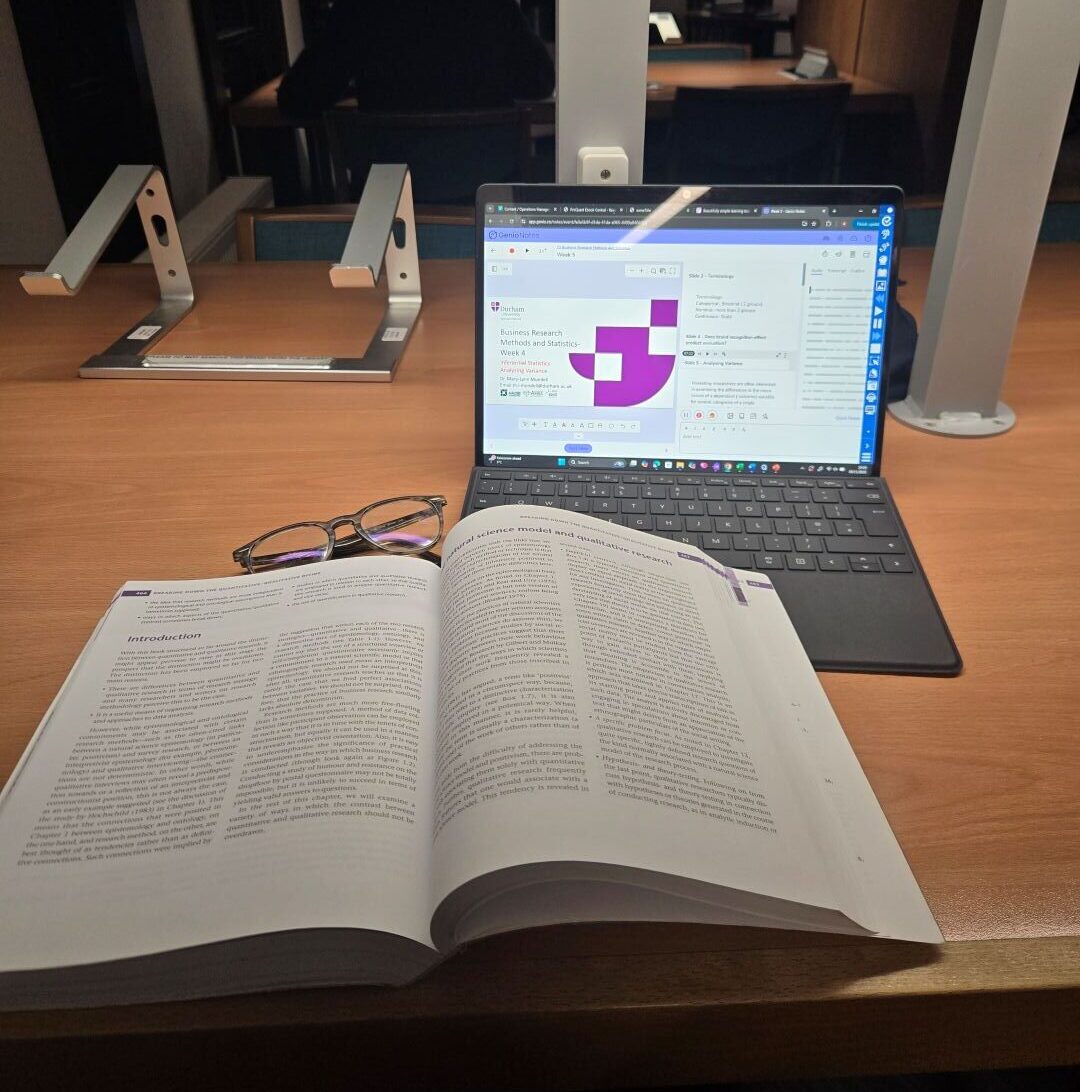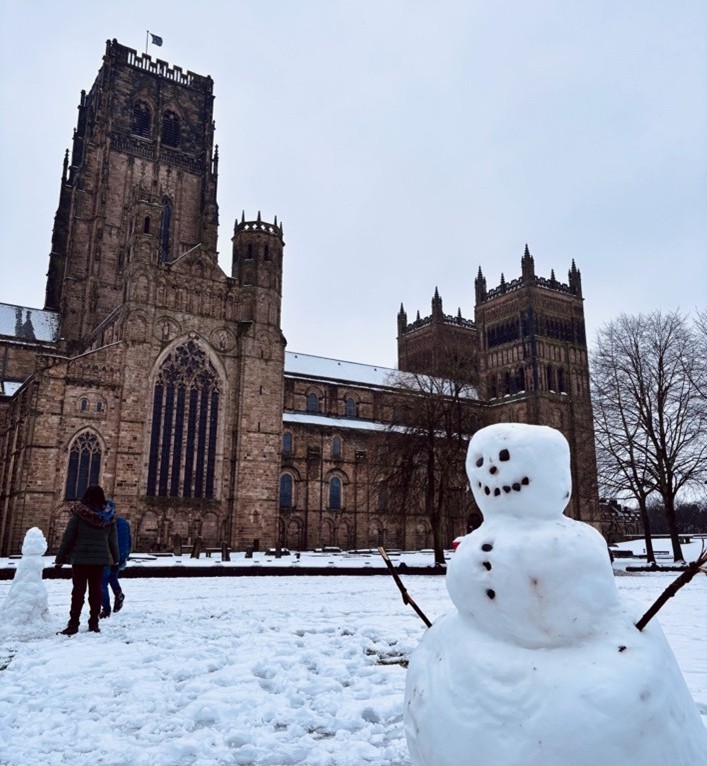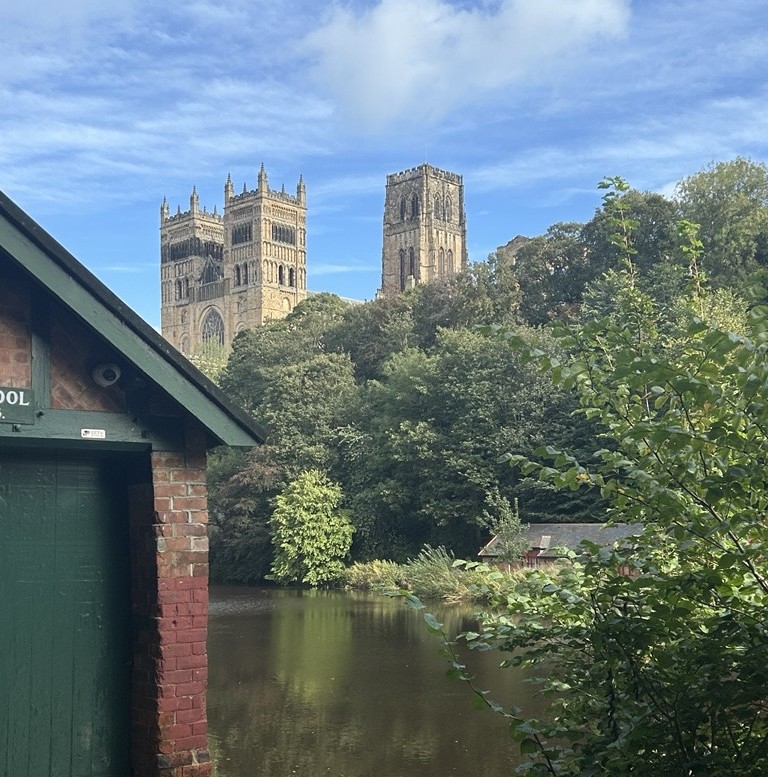Fieldwork is not just about data collection; it’s about listening deeply, standing still, and witnessing the layered geographies of memory and meaning.
Studying the module ‘Berlin: Culture, Politics and Contestation’, facilitated by fieldwork, has profoundly reshaped my understanding of space-making, power, and belonging. The quiet, reflective corners of memorial landscapes in Berlin have shaped my research journey, which has been influenced not only by interviews and observations but also by the personal and intimate encounters along the way. As a political and cultural geographer, my work sits at the intersection of displacement, education, and memory. I’m particularly interested in how cities like Berlin embody, construct, or resist their traumatic pasts.
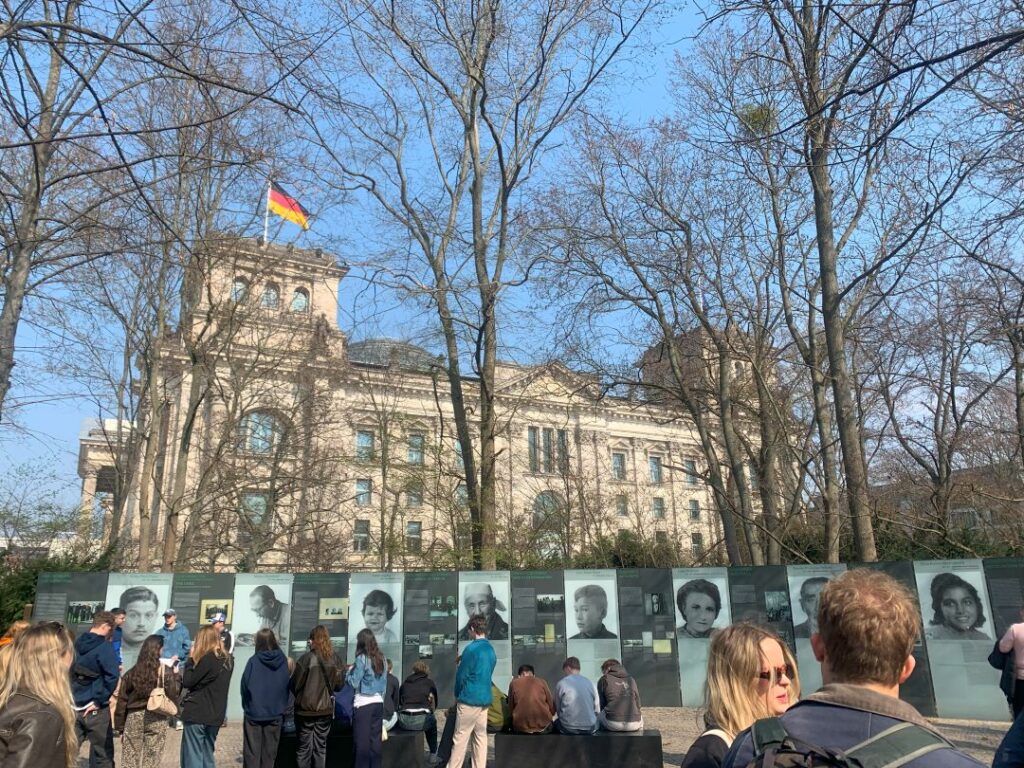
Berlin: The City as Archive and Affective Terrain
Berlin is not just a city; it is a living, breathing palimpsest of memory, trauma, and resistance. Over a week, I immersed myself in its memorial landscapes, observing, reflecting, and feeling the weight of history through spaces that continue to bear the scars of violence, division, and genocide. This blog captures my ethnographic journey through some of Berlin’s most powerful sites of remembrance.
At times, the field felt like a confrontation with commemoration and silence, and my role as a researcher. Yet, these moments of discomfort were vital. They reminded me that to study trauma is to risk proximity, to feel history in the soles of your feet as you walk over cobblestones that once bore witness to brutal violence.
Fieldnotes became more than documentation; they became meditations on complicity and hope. I carried with me more than a recorder; I carried questions about ethics, solidarity, and what it means to conduct research with rather than on ostracised communities.
Day One: Reverence and Resilience at the Kaiser Wilhelm Memorial Church
Stepping inside the Kaiser Wilhelm Memorial Church, I was immediately enveloped by a hush of reverence. Around 20 visitors (mostly German-speaking adults) moved thoughtfully through the exhibition, pausing to read, reflect, and occasionally document their experience through photography or small purchases from the souvenir shop. An unusual moment of disruption occurred when a woman began eating inside the church. This subtle breach of decorum illuminated the diverse sensibilities people bring into sacred and memorial spaces.
As I looked upward, my eyes fixated on the ceiling, its cracks, though repaired, had not been concealed. Instead, they emphasised the church’s fragility and strength. The contrast between these scars and the surrounding gilded artwork amplified the space’s emotional resonance. This reminded me that memory isn’t always found in perfection but in the imperfections that persist.
Day Two: Berlin’s Divided Pasts and Present Tensions
The East Side Gallery, stretching along remnants of the Berlin Wall, radiates energy and complexity. The reflective surfaces on the memorial pillars create a visceral intimacy, inviting visitors to see themselves in history. A guided tour for a group of German students with disabilities stood out; a powerful example of inclusive historical education.
Graffiti layers and tourists’ personal inscriptions transformed the wall into a collective canvas: art, posters, and personal narrative woven into one evolving monument. This image captures a moment from the field, a visual echo of the stories and silences I encountered. Every crack, every line, every stroke speaks of memory and movement.
Topography of Terror
Located on the former SS and Gestapo headquarters, the Topography of Terror offers a more solemn tone. Unlike other sites, visitors here engage more quietly, deeply immersed in the exhibits. Outdoor ruins of the Gestapo offices confront visitors with material remnants of terror, while inside, the café and reading rooms provide spaces for rest and reflection.
In the museum’s quietest corners, visitors lingered silently, particularly around the barred windows overlooking the Gestapo garage. It was here that the architectural framing of memory was most palpable, at once suffocating and intimate, evoking the psychological terror that words alone cannot.
Day Three: Absence, Architecture, and Jewish Resilience
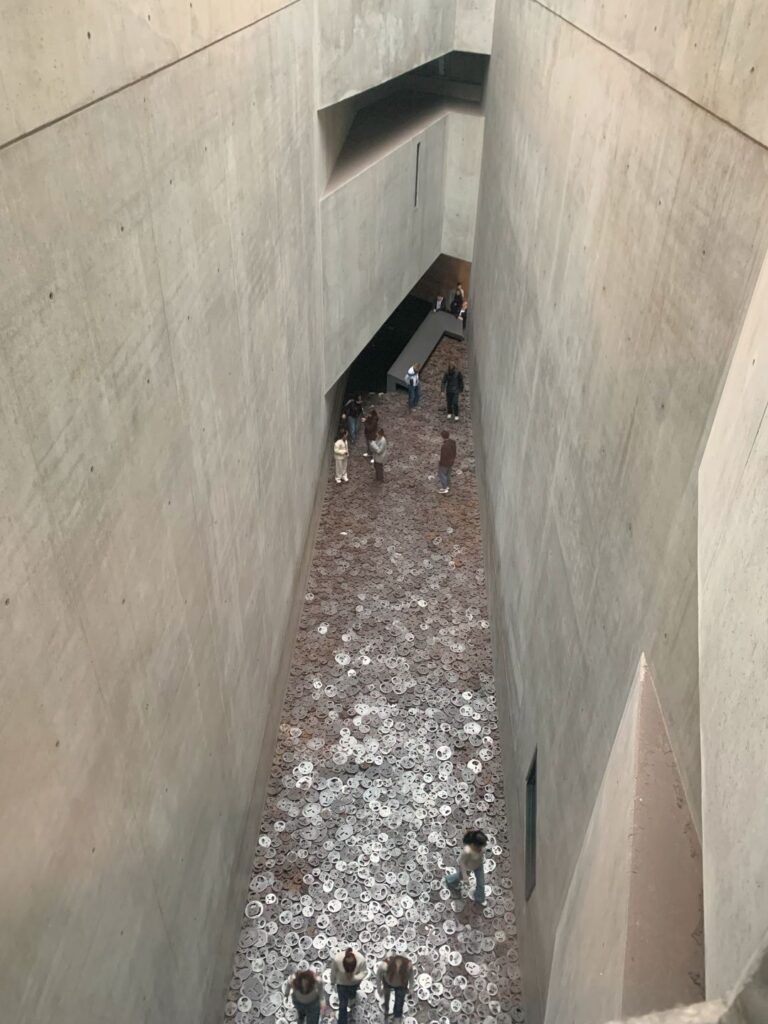
Jewish Museum Berlin
The Jewish Museum offers both confrontation and comfort: In the Axis of Exile, Jewish lives are remembered through personal artefacts; The Holocaust Memorial Book anchors the scale of loss, name by name, humanising the incomprehensible. Walking through the Memory Void and over the Fallen Leaves installation was both sonically and emotionally jarring. Each clang beneath my feet echoed the screams of silenced lives. The architectural voids do not merely frame absence; they make it physical, inescapable, and emotionally intimate.
The ‘Holocaust Tower’, cold and nearly lightless, was a space of suffocating despair. A single slit of light far above offered the illusion of hope, distant, unreachable, devastatingly symbolic. And yet, resilience emerged. In the remembrance section, I noticed an elderly couple humming to traditional Jewish tunes, a reminder that survival and joy are also part of memory. The museum resists framing Jewish identity solely in terms of loss; instead, it celebrates its continuation through art, intellect, and faith.
Day Four: Walls Remember
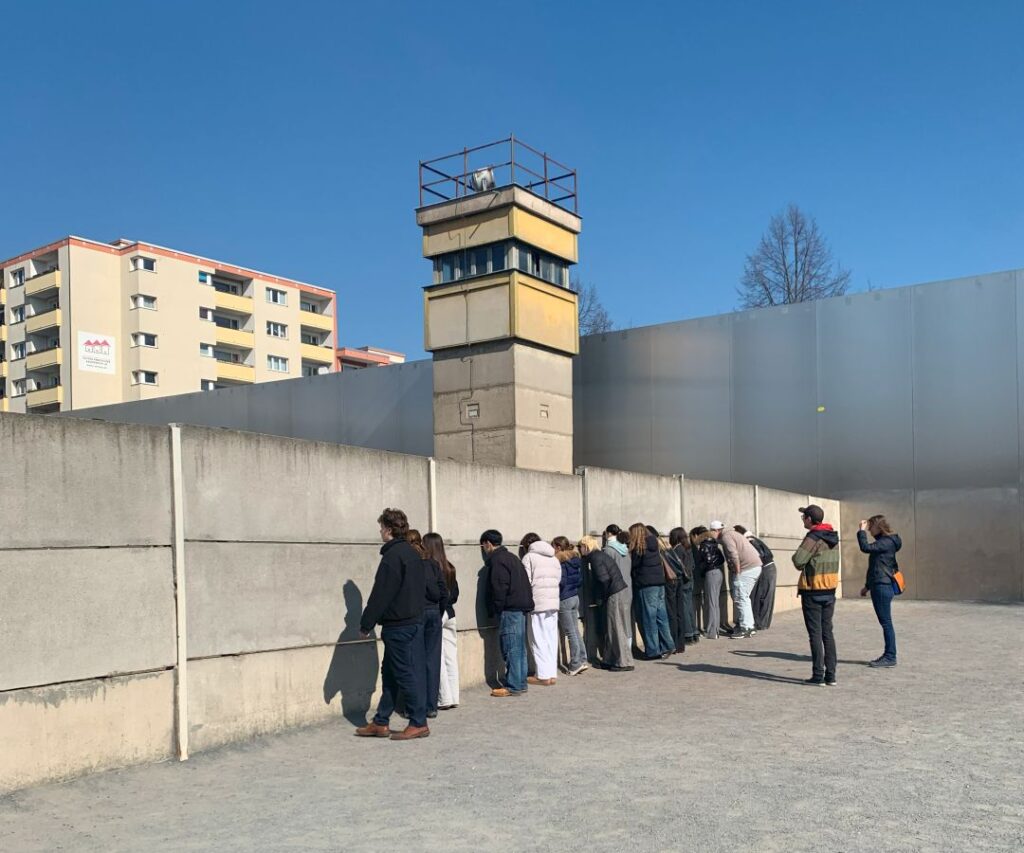
Berlin Wall Memorial
At the Berlin Wall Memorial, daily life and memory coexist in tension. Children played between the iron bars of the rebar structure, while tourists peered through a slit in the wall, a literal and metaphorical window into the Cold War. The site’s east side was quieter, marked by sparse graffiti and urban stillness. The death strip, on the other hand, is lined with wooden crosses and mass graves. The restored cemetery wall at Bergstrasse, still divided by barbed wire, serves as an enduring symbol of Berlin’s fractured past and the difficulty of reunification.
Memorial to the Murdered Jews of Europe
Perhaps the most abstract of Berlin’s memorials, the ‘Memorial to the Murdered Jews of Europe’ functions simultaneously as a site of mourning and a public park. Children played, tourists snapped selfies, and commuters passed through. But for those who paused, the space’s power unfolded. Walking through the stelae (tall, cold, and uneven) induced disorientation and emotional unease. The gradual enclosure by the concrete forms mirrors the claustrophobia of persecution. The cracks and moss on the stones suggested that memory, like stone, erodes but also persists.
Final Reflections: Memory as Architecture, Architecture as Memory
Berlin’s memorial sites are not uniform. They oscillate between stillness and chaos, between reverence and everyday life. Some, like the Topography of Terror, demand quiet contemplation; others, like the East Side Gallery, invite expression and protest. The Jewish Museum intricately layers architecture, sound, and light to evoke historical trauma and cultural continuity. Together, these spaces resist closure. They keep Berlin’s wounds visible, not as spectacles, but as invitations to remember, reflect, and learn.
Berlin does not ask its visitors to mourn uniformly; it allows for multiplicity. In doing so, it offers a blueprint for how cities can honour their pasts without being defined solely by them.
Moving Forward
Fieldwork has unsettled me, in the best way possible. It has asked me to re-examine my assumptions, stretch my methodologies, and centre voices too often peripheral in academic discourse. As I move into analysis and writing, I carry with me not just transcripts and photos, but relationships, responsibilities, and a deeper understanding of the worlds I seek to illuminate.
Research, after all, is not just about producing knowledge; it’s about transforming the spaces we inhabit and the systems we challenge.
Discover more
Feeling inspired – take a look at our Geography webpages
Download our latest prospectus and college guide here.
Follow The Durham Student on Instagram, TikTok and YouTube.


